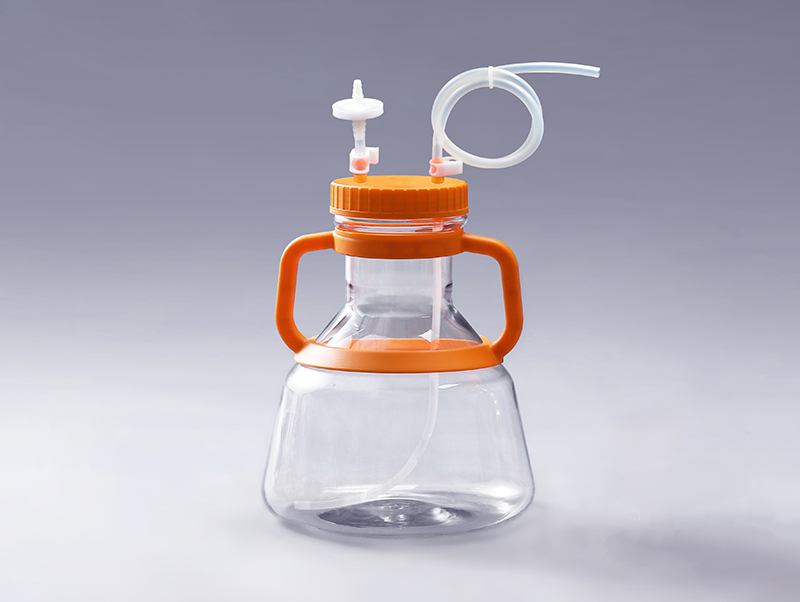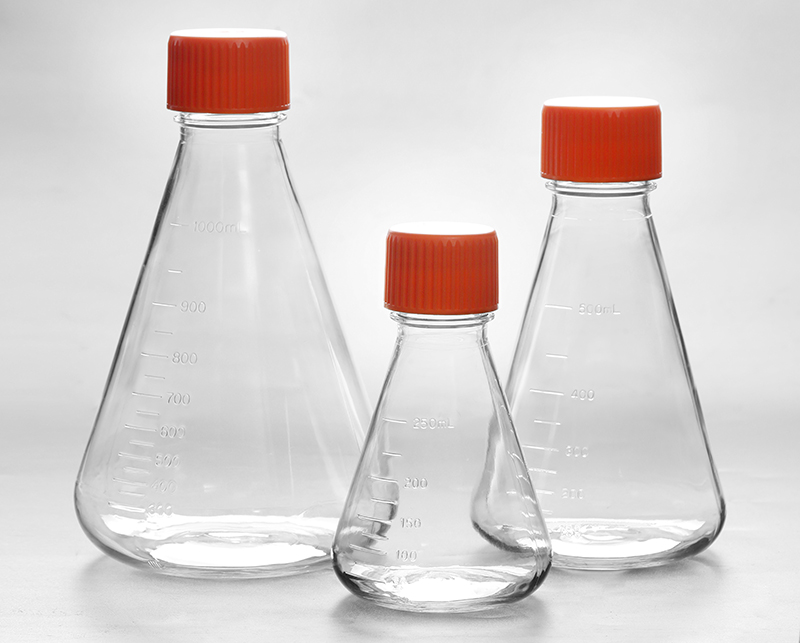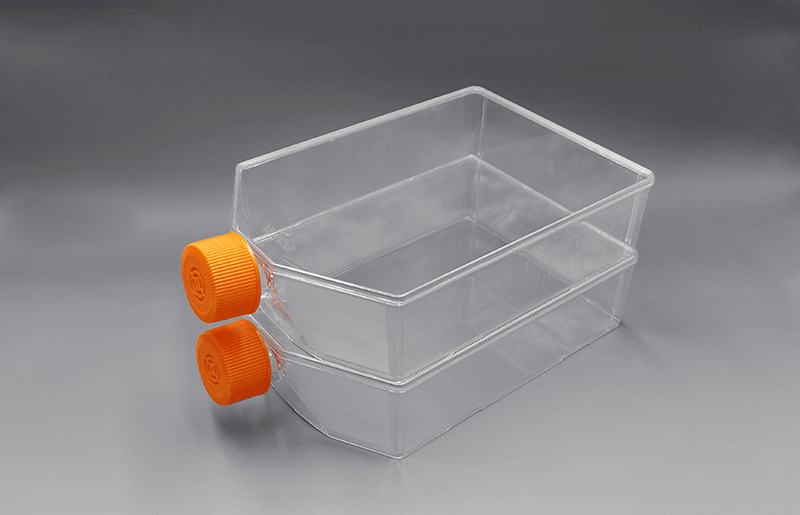NDRG2 Expression in Breast Cancer Cells Downregulates PD-L1 Expression and Restores T Cell Proliferation in Tumor-Coculture
乳腺癌细胞中的 NDRG2 表达下调 PD-L1 表达并恢复肿瘤共培养中的 T 细胞增殖
N-myc downstream-regulated gene 2 (NDRG2) is a candidate tumor suppressor in various cancers, including breast cancer. Increased expression of programmed death ligand 1 (PD-L1) is frequently observed in human cancers. Despite its role in cancer cells, the effects of NDRG2 on PD-L1 expression and PD-L1-PD-1 pathway disruption have not been investigated. We demonstrated that NDRG2 overexpression inhibits PD-L1 expression in human breast cancer cells. Blocking T cell proliferation by coculture with 4T1 mouse tumor cells that express high levels of PD-L1 could be significantly reversed by NDRG2 overexpression in the same tumor cells. NDRG2 knockdown in NDRG2-transfected cells elicited the upregulation of PD-L1 expression and accelerated the inhibition of T cell proliferation. These findings were confirmed from The Cancer Genome Atlas (TCGA) data that PD-L1 expression in basal and triple-negative breast cancer (TNBC) patients, but not in luminal A or B cancer patients, was negatively correlated with the NDRG2 expression.
N-myc 下游调节基因 2 (NDRG2) 是各种癌症(包括乳腺癌)中的候选肿瘤抑制因子。在人类癌症中经常观察到程序性死亡配体 1 (PD-L1) 的表达增加。尽管 NDRG2 在癌细胞中发挥作用,但尚未研究 NDRG2 对 PD-L1 表达和 PD-L1-PD-1 通路破坏的影响。我们证明了 NDRG2 过表达抑制人乳腺癌细胞中 PD-L1 的表达。通过与表达高水平 PD-L1 的 4T1 小鼠肿瘤细胞共培养阻断 T 细胞增殖,可以通过在相同肿瘤细胞中过表达 NDRG2 显着逆转。NDRG2 转染细胞中的 NDRG2 敲低引起 PD-L1 表达上调并加速抑制 T 细胞增殖。

Programmed cell death protein 1, also known as CD279, is one of the multiple co-inhibitory molecules expressed on the surface of immune-related lymphocytes, such as activated T cells, B cells, and myeloid cells. It binds to two ligands, PD-L1 (CD274) and PD-L2 (CD273), on cancer cells or immune infiltrates [1]. Interestingly, although PD-L2 also contributes to PD-1-mediated T cell inhibition and has a stronger affinity for PD-1 than does PD-L1, antibodies against PD-1, which are able to block binding to both PD-L1 and PD-L2, do not exhibit higher clinical efficacy than antibodies against PD-L1. Thus, in the human tumor microenvironment (TME), PD-L1 is widely believed to be the dominant inhibitory ligand of PD-1 on T cells. Interaction of PD-1 with PD-L1 can affect the activity of T cells in diverse ways, such as by suppressing cytokine production, T cell proliferation, survival, and other effector T cell functions. Therefore, an improved understanding of the mechanisms that regulate PD-L1 expression in tumor cells could lead to better clinical outcomes [2,3]. The effects of checkpoint signaling through PD-1 are reasonably well understood, whereas reverse signaling through PD-L1 within cancer cells has been investigated less than checkpoint signaling through PD-1. Although there are no canonical signaling motifs in cytoplasmic tail of PD-L1, recent literature has implicated the intracellular domain of PD-L1 for evasion of cancer cells from various apoptotic stimuli and its intrinsic signaling properties [4]. For instance, cancer cells with upregulated PD-L1 expression can protect tumor cells from cytotoxic T lymphocyte (CTL)-mediated cytolysis and from the cytotoxic effects of type 1 and type II interferons through reverse PD-L1 signaling within cancer cells, without PD-1 signaling in T cells.
N-myc downstream-regulated gene 2 (NDRG2), a member of the NDRG family, was identified as a stress-responsive gene whose expression is not only downregulated by N-myc gene expression, but also transcriptionally activated by several types of cellular stress stimuli. It has been reported in mammals that there are four types of NDRGs, such as NDRG1, 2, 3, and 4, which all have 57–65% identical amino acid sequences. They have a common NDR domain in the middle of the protein containing an alpha (α)/beta (β) hydrolase-like region [5]. The expression of NDRG2 induced by several stress stimuli, such as hypoxia, DNA damage or endoplasmic reticulum stress (ERS), and other pathological conditions is often associated with its tumor suppressor function in multiple solid tumors, including breast cancer [6], colorectal cancer [7], renal cell carcinoma [8], and lung cancer [9]. It has been also demonstrated that NDRG2 is an important repressor of the PI3K/AKT and NF-κB signaling pathways, which have critical functions in cell proliferation. In particular, our previous study has shown that NDRG2 expression can inhibit breast cancer development by inhibiting tumor cell proliferation, migration, and epithelial-mesenchymal transition (EMT) [10].
Despite the accumulated evidence indicating a tumor suppressive role of NDRG2 in various types of tumors, the question of whether the interaction between tumor cells and immune cells can be influenced by NDRG2 expression in tumor cells remains unanswered. In the present study, we sought to investigate whether NDRG2 expression in aggressive breast tumor cells can influence PD-L1 expression, eventually leading to the alteration of T cell proliferation in response to coculture with tumor cells.

程序性细胞死亡蛋白 1,也称为 CD279,是免疫相关淋巴细胞(如活化的 T 细胞、B 细胞和骨髓细胞)表面表达的多种共抑制分子之一。它与癌细胞或免疫浸润物上的两种配体 PD-L1 (CD274) 和 PD-L2 (CD273) 结合 [ 1]。有趣的是,虽然 PD-L2 也有助于 PD-1 介导的 T 细胞抑制,并且对 PD-1 的亲和力比 PD-L1 更强,但针对 PD-1 的抗体能够阻断与 PD-L1 和PD-L2 的临床疗效不高于针对 PD-L1 的抗体。因此,在人类肿瘤微环境(TME)中,PD-L1被广泛认为是PD-1对T细胞的主要抑制配体。PD-1 与 PD-L1 的相互作用可以以多种方式影响 T 细胞的活性,例如通过抑制细胞因子产生、T 细胞增殖、存活和其他效应 T 细胞功能。因此,更好地了解调节肿瘤细胞中 PD-L1 表达的机制可能会带来更好的临床结果 [ 2 , 3]。通过 PD-1 的检查点信号传导的影响已被很好地理解,而在癌细胞内通过 PD-L1 的反向信号传导的研究少于通过 PD-1 的检查点信号传导。尽管 PD-L1 的细胞质尾部没有典型的信号基序,但最近的文献表明 PD-L1 的细胞内结构域可用于逃避各种凋亡刺激的癌细胞及其固有的信号传导特性 [ 4 ]。例如,PD-L1 表达上调的癌细胞可以通过癌细胞内的反向 PD-L1 信号传导保护肿瘤细胞免受细胞毒性 T 淋巴细胞 (CTL) 介导的细胞溶解和 1 型和 II 型干扰素的细胞毒性作用,而无需 PD- 1 T 细胞中的信号传导。
N-myc 下游调节基因 2 (NDRG2) 是 NDRG 家族的成员,被鉴定为一种应激反应基因,其表达不仅被 N-myc 基因表达下调,而且被几种类型的细胞应激转录激活刺激。据报道,在哺乳动物中有四种类型的 NDRG,如 NDRG1、2、3 和 4,它们都具有 57-65% 的相同氨基酸序列。它们在含有 α (α)/β (β) 水解酶样区域的蛋白质中间有一个共同的 NDR 结构域 [ 5 ]。NDRG2 在多种应激刺激(如缺氧、DNA 损伤或内质网应激 (ERS) 和其他病理条件下)诱导的表达通常与其在包括乳腺癌在内的多种实体瘤中的抑癌功能有关 [ 6]、结直肠癌 [ 7 ]、肾细胞癌 [ 8 ] 和肺癌 [ 9 ]。还证明 NDRG2 是 PI3K/AKT 和 NF-κB 信号通路的重要阻遏物,在细胞增殖中具有关键功能。特别是,我们之前的研究表明,NDRG2 的表达可以通过抑制肿瘤细胞的增殖、迁移和上皮-间质转化 (EMT) [ 10 ]来抑制乳腺癌的发展。
尽管积累的证据表明 NDRG2 在各种类型的肿瘤中具有抑癌作用,但肿瘤细胞和免疫细胞之间的相互作用是否会受到肿瘤细胞中 NDRG2 表达的影响的问题仍未得到解答。在本研究中,我们试图研究侵袭性乳腺肿瘤细胞中 NDRG2 的表达是否会影响 PD-L1 的表达,最终导致 T 细胞增殖改变以响应与肿瘤细胞的共培养。

In the present study, it was confirmed that downregulation of NDRG2, which is often observed in several types of cancer patients, is associated with upregulation of PD-L1 expression in breast cancer cells and patients. NDRG2 expression in breast cancer cells could restore the T cell proliferation activity that is suppressed by PD-L1 expression on tumor cells.
在本研究中,证实了在几种类型的癌症患者中经常观察到的 NDRG2 的下调与乳腺癌细胞和患者中 PD-L1 表达的上调有关。乳腺癌细胞中 NDRG2 的表达可以恢复被肿瘤细胞上 PD-L1 表达抑制的 T 细胞增殖活性。
关键词: 免疫检查点,PD-L1,NDRG2 ,乳腺癌,T细胞增殖,TCGA数据,immune checkpoint,PD-L1; NDRG2; breast cancer,T cell proliferation,TCGA data
来源:MDPI https://www.mdpi.com/2072-6694/13/23/6112/htm

上一篇: 细胞转瓶中产生沉淀的四大原因分析
下一篇: PETG血清瓶的灭菌方式及特点